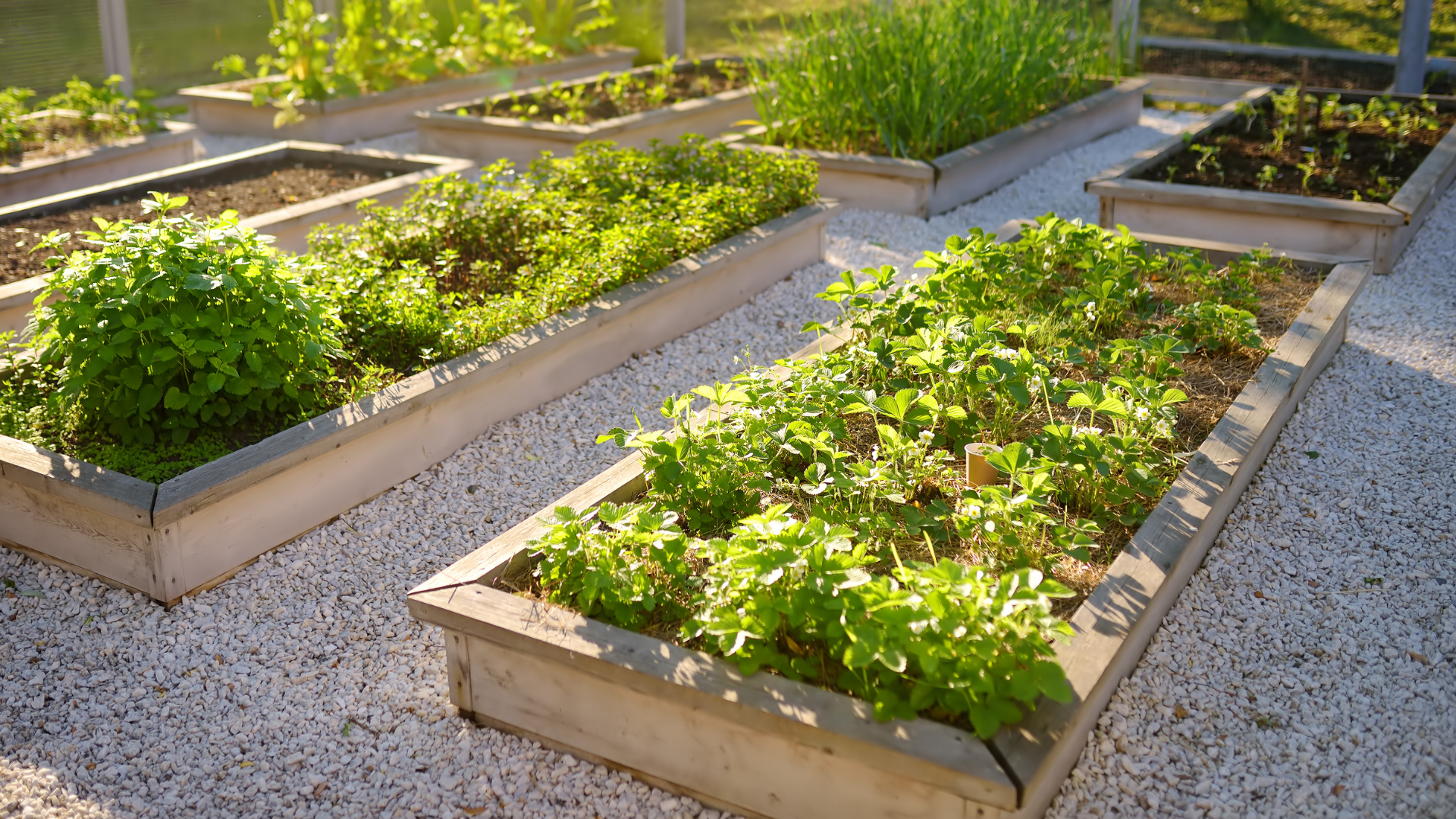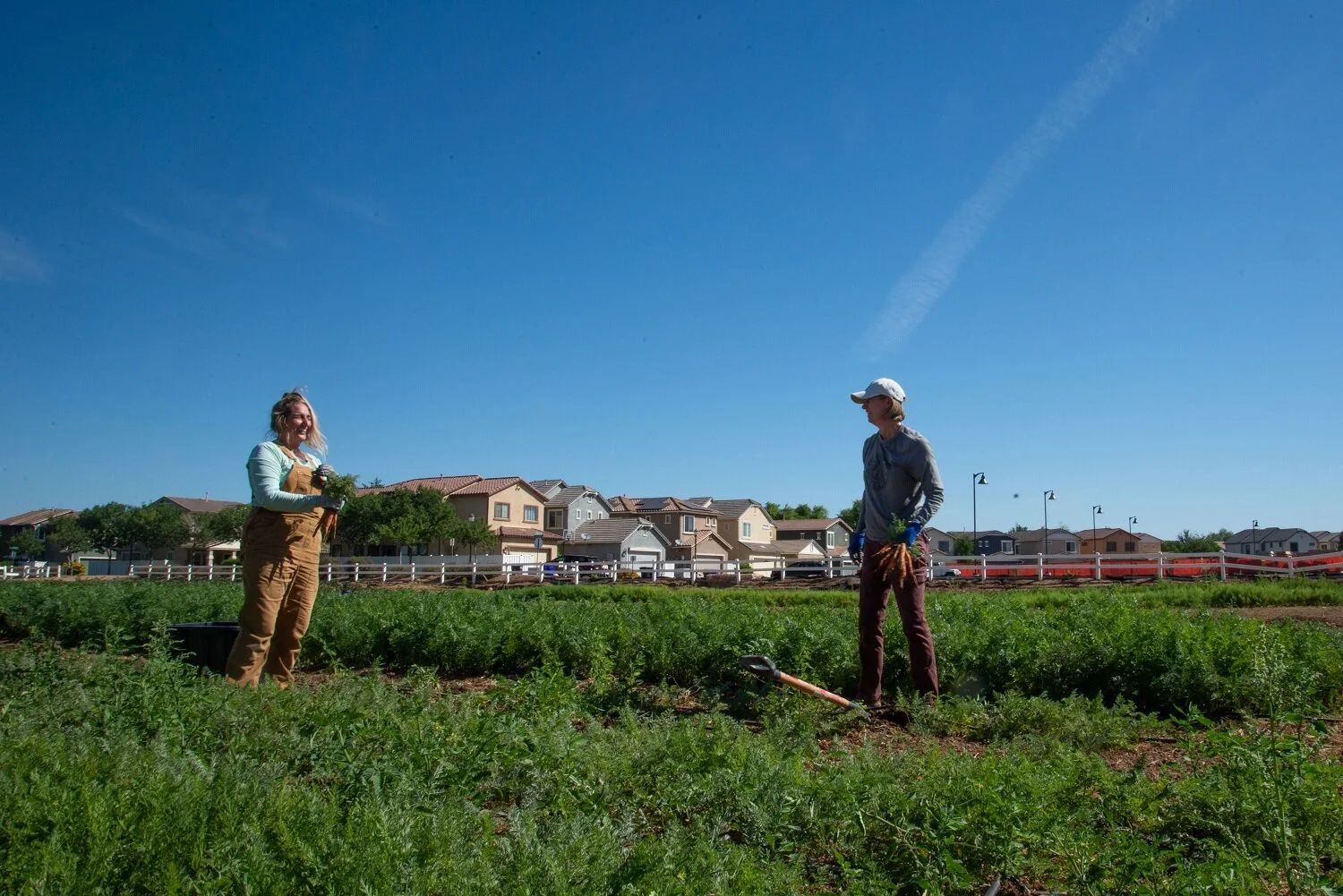An Overview of Urban Farming Activities in Cities – The Key to A Resilient Future
Advertisement
We all know that spending time in nature is good for us. We feel better when we experience the world around us, it brings us peace and takes us out of ourselves and lowers our stress levels. Nature is one of our best friends. As cities encourage and mandate ways to mitigate and adapt to climate change, adding green infrastructure that allows us to grow food is a critically important response.
There are many forms of green infrastructure for food production. Scaling these up will be critical to slow down run-away climate change, for example, by reducing long haul transportation emissions associated with our current unsustainable food system.
Here are some of the ways that cities are encouraging local food production through various technologies and approaches.
Green Roof Farms
In 2009, the City of Toronto passed a bylaw requiring certain new buildings over a specific size to incorporate green roof technology into their finished designs. Since then, other large North American cities have followed suit – San Francisco, New York, Portland and Denver, for example. Several of these cities require green roofs on large new buildings while others have programs that provide financing for green roofs and rooftop farms on existing structures.
Green roofs vary in type and purpose considerably – from pure aesthetics to food growing. Some cities, such as Brooklyn, New York, host sizable soil-based rooftop farms, such as the Brooklyn Grange series of rooftop farms. Collectively these three farms generate over 100,000 lbs of organically grown produce every year. Many types of food can be grown on rooftop farms, from cabbage, potatoes and carrots, to leafy green vegetables and micro greens. Several rooftop farms located in China have even been designed to support tea production.
Brooklyn Navy Yard Rooftop Farm. Photo: Brooklyn Grange
Rooftop Greenhouses
Growing food in greenhouses is not new, especially in colder climates where the growing season is short and most produce has to be shipped long distances. Montreal has cold winters yet the owners of Lufa Farms saw an ongoing opportunity to grow food year-round using rooftop greenhouses. Greenhouses are used effectively across North America, especially in the colder areas. Some rooftops combine soil based and greenhouse farming on the same structure.
Advertisement
Green Walls
Dedicated gardeners have long known that planting climbing vegetables is a great space saver, typical of small urban gardens, and a way to encourage plant growth when growing horizontally is not really an option. Modular green wall systems can readily support plants such as beans, peas, flowering plants and herbs using this approach. Depending on the local climate, green wall systems can be used both outside and inside buildings. Some are soil based while others are hydroponic. Indoor hydroponic and aeroponic vertical farms are producing fresh produce in cities around the world.
Container Gardens
A community garden raised in garden beds.
Many backyard gardeners use containers to grow food because they are space savers, and are relatively easy to move. As we age, it is easier to reach and tend to plants that are not on the ground, but are rather planted in raised beds or larger containers. Condominium owners often use container gardens on their balconies. Pretty much any vegetable or herb can be successfully grown using this method, provided there is enough water, nutrients and sunlight. The containers come in a myriad of shapes and sizes, some with false bottoms to store additional water in order to reduce the frequency of watering. Others are hydroponic, providing nutrients to the plants through circulating water.
Community Gardens
Many cities in North America now host publicly owned community garden spaces. Once the gardener gets approval for a space, most people retain that space for years. Waiting lists are typical. The oldest community garden in the United States is in Winston-Salem, which started in 1759 in what is now Bethabara Park. As was the case across the continent, the community garden movement exploded in the early 2000s and Winston-Salem now has over 160 community gardens managed by Forsyth County Community Gardening. The organization offers training, a seed bank, a tool lending library and the distinction of supporting a growing movement in Salem-Winston. Between 2000 and 2014, Detroit saw the number of community gardens quadruple to nearly 1500. Estimates say these gardens produce over 400,000 pounds of fresh produce every year. According to Statista Research, Portland, Oregon is the American city with the largest number of community gardens per 10,000 residents (4 per 10,000). As more people live in apartments and condos without dedicated green space, community gardening is on the rise. In Japan, community gardens have been built on roofs which cover rail lines in urban areas. The small plots are rented out to the community.
Advertisement
Community Orchards
Community orchards in cities are a relatively recent phenomenon. In Seattle, City Fruit is one of the leaders of urban orchard development in the US having existed since 2008. According to their 2020 annual report, City Fruit staff and volunteers harvested over 23,000 lbs of fruit (plums, pears, grapes, figs and apples) in 12 public parksv and private locations across Seattle. The bulk of that harvest was donated to food banks and other meal programs. Covid proved to be particularly challenging for the organization as volunteers were in lockdown and money was short due to municipal budget cuts, but the organization is resilient and continues to operate successfully. The Ben Nobleman Park Community Orchard in Toronto took inspiration from Seattle and in 2009 established a small orchard (apples, plums, apricots and sweet cherries) in a city-owned park and it’s very popular. Although it is in a public park, in 2021 someone came and stole all the apricots under the cover of darkness, leaving the volunteers very frustrated for what was expected to be a healthy bounty. There is a small orchard, recently planted on the rooftop of the Javits Convention Center in New York City.
Agrihoods
Carrots being harvested at the Agritopia Farm. Photo: Agritopia Farm
An agrihood is a neighbourhood development with a farm as the central focus. It’s a local food devotee’s favourite dream – community shared agriculture right in the neighbourhood. For residents, the benefits are numerous. It can mean less shared cost than the traditional approach - landscaping or pool maintenance for instance. It also means that fresh produce is literally at their doorstep. It brings the connection to nature – so important for our mental health – right to the door. Living in a community agrihood provides many recreational and educational opportunities for both adults and children to be able to see where their food comes from. It also might provide an opportunity for residents to participate in the planting, upkeep and harvesting of the food crops planted there. And it’s a great hands-on tool for teaching kids.
Beekeeping
Similar to urban food growing, beekeeping has grown tremendously in popularity in the past couple of decades. The reasons are simple – bees are pollinators and can improve food security, sustainability and biodiversity in cities. Some bee species also provide honey, beeswax and royal jelly which is a local economic opportunity that can also provide some agricultural stability – so critical when food supply chains are threatened. Honey is popular worldwide. Rooftop beehives are common in cities such as Toronto, Paris and New York, because cities generally use less pesticides; there’s an abundance of food sources for bees in parks, home gardens, flower beds etc; water is generally available in cities from nearby freshwater lakes, rivers, and water fountains etc; and because of heat island effect cities are warmer than the countryside, which bees prefer. Alveole, a Canadian company, began a turnkey service in 2013 to install rooftop beehives in cities. Currently they have installed and manage hives in 22 US and 10 Canadian cities, and have expanded to six European centres. Did you know that Antarctica is the only continent with no bees?
Advertisement
Mushroom Farming
A wild mushroom selection.
Mushrooms are a specialized, high value crop that like cool, very humid temperatures to thrive (13C/55F, 88 per cent relative humidity). They also grow in the dark, which makes them an ideal crop to grow inside repurposed urban warehouse space, for instance. Big Block Mushroom Workshop in Montreal has operated from a third storey warehouse space for four years and produces about 100 kgs of mushrooms daily, mostly for the restaurant trade. Tivoli Mushrooms has a similar set-up in Hudson, NY. Devon Gilroy, an executive chef and forager, is a co-owner of Tivoli which produces about 10 types of mushrooms and can grow a 3000-5000-pound crop of mushrooms from start to harvest in 28 days. He started the farm as he was interested in using less well-known mushrooms in his kitchen and was equally interested in educating the public about their many health benefits, as mushrooms can be a source of protein, Vitamin D and they are rich in antioxidants.
Cricket Farming
Farmed crickets.
That familiar summer sound may be coming to your dinner plate soon. It takes six weeks for a cricket to mature. Entomo Farms, a leader in cricket farming, can house millions of crickets at their warehouse facility in Norwood, Ontario. They produce 50 million crickets a week or 9000 weekly lbs of protein. Fibre, iron and calcium are additional key nutritional features. Crickets are more nutritious and sustainable pound by pound than beef. Crickets also require significantly less water to produce a pound of protein than beef. No known diseases can transfer between crickets and people. Once mature, the crickets are ground into a coffee-like powder which can be then used to nutritionally augment baked goods for instance. As the world’s population grows and people continue to search for sustainably grown foods, crickets may begin to make a more regular appearance on our dinner plates, in the dog’s food or in our snack food.
Backyard Chickens
A chicken wandering in a backyard.
Allowing backyard poultry growing is a hotly debated topic in many communities. Concerns surround the type of living conditions allowed and the need for disease protection for the chickens from other wildlife and from the chickens to humans. Properly managed these concerns can be allayed. In Ontario, five cities currently allow the practice, and Toronto is about to decide whether or not to expand or cancel a four-year pilot program that allowed four hens per coop to be raised in four different areas of the city. No roosters were allowed due to noise concerns. Sixty homes across the four Toronto wards participated in the pilot with little to no community complaints. Like Toronto, most Colorado cities don’t allow roosters under their backyard poultry rules. During the pandemic, a huge increase in sales of baby chicks occurred across the state as many people started focusing on local food production, survivalism and sustainability. Many people continue to advocate for more urban poultry growing.
Aquaculture
Fish farming is also a highly sensitive topic, especially on North America’s west coast where the debate has raged for some time about the environmental consequences of fish farms on local habitat. Aquaculture involves raising fish in a controlled environment. Urban aquaculture is still fish growing but on a much smaller scale and in buildings under carefully controlled settings. Asia is the leader in using aquaculture for food. In Singapore, Apollo Aquaculture Group is currently constructing an eight-storey building which will be solely dedicated to raising fish. Singapore has a goal to raise its local food production from 10 per cent to 30 per cent in the coming years, to not only avoid the production of greenhouse gases but to increase local food security.
Conclusion
Developing healthy food systems in cities is essential to future-proof inhabitants from the inevitability of climate change-induced food security challenges. Local and urban food production can help augment regionally based agriculture, provide workforce training, help us manage stormwater and the urban heat island and provide for healthier, more sustainable communities.
Advertisement
Joyce McLean is a writer and consultant based in Toronto.










